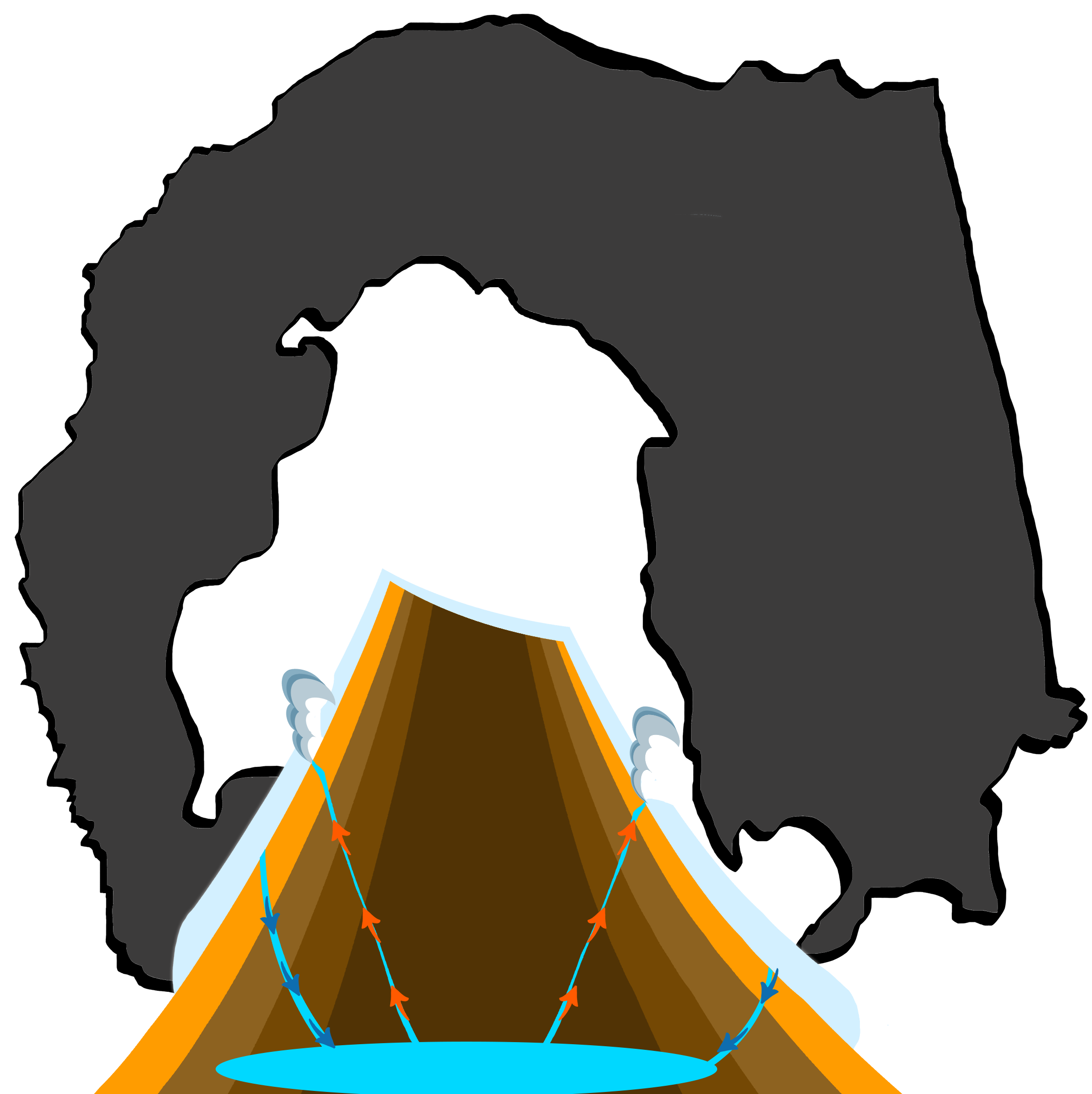Why Deception Island?
Deception Island, discovered in 1820, is amongst the most active volcanoes in Antarctica with a record of over 20 explosive eruptions in the last two centuries.

Located in the South Shetland Islands (Antarctica) at the spreading centre of the Bransfield Strait marginal basin, the island currently hosts two scientific stations operating yearly during the austral summer season and is one of the most popular touristic destinations in Antarctica with over 15,000 visitors per year.
Since future volcanic activity on Deception Island is certain to occur, although the timescale and characteristics of that activity and potential related hazards still remain unclear, it is a valid and pressing cause for concern for tourists, scientists and military personnel visiting or working on or near the island.
Evidences of the existence of an hydrothermal system come from reported mineral alterations in the caldera-forming deposit unit (e.g. palagonitic alteration with crystallization of smectites, Fe-oxides, zeolites and calcite) (Martí and Baraldo 1990) and in the post-caldera deposits due to recent volcanic activity (e.g. Caselli et al. 2004; Prieto-Ballesteros et al. 2013). Current hydrothermal activity on the island is evidenced by the presence of fumaroles, steaming grounds and hot springs along the shore of Port Foster bay, the sea-flooded section of the caldera depression (e.g. Álvarez-Valero et al. 2020). Geochemistry of fumaroles and surface gaseous flux have revealed abundant presence of CO2, N2 and H2S (e.g. Kusakabe et al. 2009; Padron et al. 2015). Within Port Foster, hydrothermal seeps and vents been described on the seafloor (e.g. Somoza et al. 2004). Also, monitoring records on Deception Island have revealed several periods of high seismicity and ground deformation in the past, most of them interpreted as fresh magma injections and/or the activity of the hydrothermal system (e.g. Rosado et al. 2019). Despite all evidences, a complete description of the hydrothermal alteration products and a comprehensive model of the dynamics (and structure) of the hydrothermal system of Deception Island is still lacking.
Cited references:
Álvarez-Valero, et al. (2020). δD and δ18O variations of the magmatic system beneath Deception Island volcano (Antarctica): implications for magma ascent and eruption forecasting. Chemical Geology, 542. 119595
Caselli, A., et al. (2004). Manifestaciones de piritas framboidales en fumarolas de la Isla Decepción (Antártida): Implicancias genéticas. Revista de La Asociación Geológica Argentina, 59, 152–157.
Kusakabe, M., et al. (2009). Noble gas and stable isotope geochemistry of thermal fluids from Deception Island, Antarctica. Antarctic Science, 21(3), 255–267.
Martí, J., & Baraldo, A. (1990). Pre-caldera pyroclastic deposits of Deception Island (South Shetland Islands). Antarctic Science, 2(4), 345–352.
Padrón, E., et al. (2015). Geochemical evidence of different sources of long-period seismic events at Deception volcano, South Shetland Islands, Antarctica. Antarctic Science, 27(6), 557–565.
Prieto-Ballesteros, O. et al (2013) Hydrothermal alteration minerals of Cerro Caliente (Deception Island, Antarctica). Analogies to several assemblages of Mars. European Planetary Science Congress 2013, EPSC2013-41059
Rosado, B., et al. 2019). Volcano-tectonic dynamics of Deception Island (Antarctica): 27 years of GPS observations (1991–2018). Journal of Volcanology and Geothermal Research, 381, 57–82.
Somoza, L., et al. (2004). Evidence for hydrothermal venting and sediment volcanism discharged after recent short-lived volcanic eruptions at Deception Island, Bransfield Strait, Antarctica. Marine Geology, 203(1–2), 119–140.

